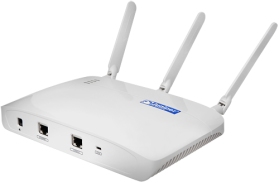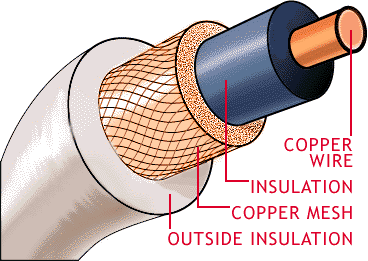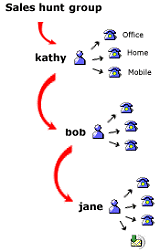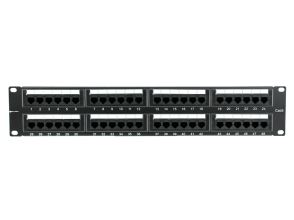We thought it might be helpful to have a glossary of telecom terms just in case people did not know what they were. If you can think of other terms that should be in here or you want in here please let us know.
Access point- A radio access point (wireless data base station) that is used to connect wireless data devices (stations) to a wired local area network (WLAN).

Add-on conference- A service feature that allows an additional party to be added to an established call without attendant assistance.
Analog switch- An analog switch is a connection device that is used in a communication system that can setup direct connections between input lines to output lines. The connections are continuous so there is no changing of the signals as they pass through the switch.
Amplifier- An amplifier is a device or assembly that converts an input signal (usually low level) into another (usually larger) version of itself. Amplifiers increase both the desired signal and unwanted noise signals. Noise signals are any random disturbance or unwanted signal in a communication system that tends to obscure the clarity of a signal in relation to its intended use.
Auto Attendant- The auto attendant feature is used to route incoming telephone calls based on selections or information provided by the incoming caller. The auto attendant feature may use interactive voice response (IVR) to prompt the caller to select the call routing based on category choices or it may use the calling number identification to determine the destination (e.g. a telephone number for a specific sales group).
Bandwidth (BW)- A characteristic of a communication channel that is the amount of information that can be passed through it in a given amount of time, usually expressed in bits per second.
Basic rate interface (BRI)- Basic rate interface is a data interface that is used in the integrated services digital network (ISDN) system for end user devices or low speed connections.
Bridge- A data communication device that connects two or more segments of data communication networks by forwarding packets between them. Bridges extend the reach of the LAN from one segment to another.
Broadband ISDN- (Integrated Services Digital Network) An integrated digital network in which the same time-division switches and digital transmission paths are used to establish connections for different services.
Call Forward- A service feature, available in some switching systems, whereby calls can be rerouted automatically from one line, i.e., station number, to another or to an attendant.
Call hold- A feature that allows a user to temporarily hold and incoming call, typically to use other features such as transfer or to originate a 3rd party call.
Call record- Recorded data pertaining to a single call.
Call transfer- A switching system service feature that allows the calling or called user to instruct the local switching equipment or switch attendant to transfer an existing call to another terminal.
Call waiting- A telephone call processing feature that notifies a telephone user that another incoming call is waiting to be answered. This is typically provided by a brief tone that is not heard by the other callers.
Circuit- The complete path between two terminals over which one-way or two-way communications may be provided.
Circuit switching- The process of connecting two points in a communications network such that the path (switching points) through the network remains fixed during the operation of a communications circuit.
Coaxial cable- A coaxial cable (coax) is a multi-conductor cable comprising a central wire conductor surrounded by a hollow cylindrical insulating space of air, or solid insulation, or mostly air with spaced insulating disks, finally surrounded by a hollow cylindrical outer conductor.

Codec- Acronym for coder-decoder. An electronic device that converts analog signals, such as video and voice signals, into digital form and compresses them to conserve bandwidth on a transmission path.
Common carrier- In a telecommunications context, a telecommunications company that holds itself out to the public for hire to provide communications transmission services.
Compatibility- Capability of two or more items or components of equipment or material to exist or function in the same system or environment without mutual interference.
Conference call- The connection of three or more telephones to a telephone conversation.
Coupling- The transferring of a signal or energy between components or systems.
Cutover- The process or date where new systems or equipment are used to provide services to customers (old systems are cut off).
Data Switching Exchange- The equipment installed at a single location to perform switching functions such as circuit switching, message switching, and packet switching.
Degradation- a condition in which one or more of the required performance parameters fall outside predetermined limits, resulting in a lower quality of service.
Demarc- That point at which operational control or ownership of communications facilities changes from one organizational entity to another.
Demarc Extension- The transmission path originating from the interface of the access providers side of a telecommunication circuit demarcation point within a premise and ending at the termination prior to the interface of the edge Customer Premises Equipment.
Denial of Service (DoS)- The results of any actions or series of actions that prevents any part of an information system from working.
Deregulation – A reduction in regulation of (a) tariffs, (b) market entry and exit, and/or (c) facilities in public telecommunication services.
DID- (Direct Inward Dialing) A service feature that allows inward-directed calls to a PBX to reach a specific PBX extension without human intervention.
Digital switch- A digital switch is a device in a communication network that receives and forwards digital signals a data storage system. The digital switch receives a block of data from an input line, stores the data in a digital storage matrix or system, retrieves the block of data when the output line is ready, and transfers the block of data to the output line.
DOD- ( Direct Outward Dialing) An automated PBX service feature that provides for outgoing calls to be dialed directly from the user terminal.
Domain Name Server (DNS)- A server within the Internet network that performs translation between fully qualified domain names and IP addresses according to the domain name system.
Downtime- The interval during which a functional unit is inoperable.
Encode- To convert data by the use of a code, frequently one consisting of binary numbers, in such a manner that reconversion to the original form is possible.
Encoder- A device that processes one or more input signals into a specified form for transmission and/or storage.
End user- The ultimate user of a telecommunications service.
Encryption- The process of protecting voice or data information from being obtained by unauthorized users. Encryption involves the use of a data processing algorithm (formula program) that uses one or more secret keys that both the sender and receiver of the information use to encrypt and decrypt the information.
Exchange- In the telephone industry, a geographic area (such as a city and its environs) established by a regulated telephone company for the provision of local telephone services.
Feedback- Feedback is the transmission of some of the output from a loudspeaker back into the same audio system via a microphone, which causes an unpleasant howling noise.
Fiber optic cable- A grouping of one or more optical transmission lines into a single sheathed (coated) line. Each fiber in the cable consists of a core, thinner than a human hair, surrounded by a sheath with a much lower refractive index. Light signals introduced at one end of the cable are conducted along the cable as the signals are reflected from the sheath. Fiber-optic cable is lighter and smaller than traditional copper cable, is immune to electrical interference, offers better security, and has better signal-transmitting qualities.
Firewall- A computer that (a) acts as an interface between two networks (e.g. the internet and a private network) and (b) regulates traffic between those networks for the purpose of protecting the internal network from electronic attacks originating from the external network.
Gain- The ratio of output current, voltage, or power to input current, voltage, or power, respectively.
Gateway- Interface providing compatibility between networks by converting transmission speeds, protocols, codes, or security measures.
Hunt Groups- A hunt group is a list of telephone numbers that are candidates for use in the delivery of an incoming call. When any of the numbers of the hunt group are called, the telephone network sequentially searches through the hunt group list to find an inactive (idle) line. When the system finds an idle line, the line will be alerted (ringing) of the incoming call. Hunt lines are sometimes called rollover lines.

Interchangeability- The ability to exchange hardware components having the same form, fit, and function, across platforms, without effecting the functionality of the system.
Interface- A point of communication between two or more processes, persons, or other physical entities. A point of interconnection between user terminal equipment and commercial communications facilities.
Internet protocol (IP) – low-level network protocol that is used for the addressing and routing of packets through data networks. IP is the common language of the Internet. The Internet protocol only has routing information and no data confirmation rules.
Interoperability- The ability of systems, units or forces to provide services to and accept services from other systems, units, or forces and to use the services so exchanged to enable them to operate effectively together.
IP Address- A device’s or resource’s numerical address as expressed in the format specified in the Internet Protocol (IP)
ISDN- (Integrated Services Digital Network) An integrated digital network in which the same time-division switches and digital transmission paths are used to establish connections for different services.
Jitter- The short-term variation of transmission delay time for data packets that usually results from varying time delays in transmission due to different paths or routing processes used in a packet communication network.
LAN- (Local Area Network) A data communications system that (a) lies within a limited spatial area, (b) has a specific user group, (c) has a specific topology, and (d) is not a public switched telecommunications network, but may be connected to one.
Landline- An informal name for conventional telephone facilities
Local exchange- Another term for an end office (EO) telephone switching system. The local telephone company is sometimes called the local exchange.
Modem- Acronym for modulator/demodulator. In computer communications, a device used for converting digital signals into, and recovering them from, quasi-analog signals suitable for transmission over analog communications channels. Note: Many additional functions may be added to a modem to provide for customer service and control features.
Module- An interchangeable subassembly that constitutes part of, i.e., is integrated into, a larger device or system.
MU-Law Algorithm- A standard analog signal compression algorithm, used in digital communication systems of the North American digital hierarchy, to optimize the dynamic range of an analog signal prior to digitizing.
Node- In network topology, a terminal of any branch of a network or an interconnection common to two or more branches of a network.
Overflow- The generation of potential traffic that exceeds the capacity of a communications system or subsystem.
Packet- A sequence of binary digits, including data and control signals that is transmitted and switched as a composite whole.
Packet Switching- A process of connecting two or more points for data transmission in which the data or messages are broken into increments, or packets, each of which can be routed separately from a source then reassembled in the proper order at the destination.
Party Line- an arrangement in which two or more user end instruments, usually telephones, are connected to the same loop.
Patch Panel- An array of switches or connectors that can be used to reroute or reconfigure an copper wire, coax or optical transmission systems. Patch panels are commonly installed to allow reconfiguration of connections such as in an office building where people are moved or reassigned without the need to install new wiring or network distribution equipment. (see image below)

PBX- A private (as in owned by the telephone company) exchange (as in the Central Office). A PBX is a small version of the phone company’s larger central switching office. In other words, an analog telephone switchboard located on the customer premises and used to connect private and public telephone networks.
PBX Trunk- In a communications network, a single transmission channel between two points that are switching centers or nodes, or both. Trunks may be used to interconnect switches, such as major, minor, public and private switches, to form networks.
Plug and Play- Of or pertaining to the ability of certain operating systems to automatically (a) detect a new device that has been added to the system, (b) uniquily identify the device, and (C) install the appropriate drivers and system files for that device.
Point of Termination- (POT) The point of demacation between (exchange) carriers that establish the technical interface, test points, and division of operational responsibility.
Port- In a communications network, a point at which signals can enter or leave the network en route to or from another network.
Portability- The ability to transfer data from one system to another without being required to recreate or reenter data descriptions or to modify significantly the application being transported.
POTS- Plain Old Telephone Service. Providing of basic telephone service without any enhanced features. It is the common term for ordinary residential telephone service.
Primary rate interface (PRI) – A standard high-speed data communications interface. This interface provides a standard data rates for T1 1.544 Mbps and E1 2.048 Mbps. The PRI interface can be divided into several channels (channelized).
Protocol- In layered communications system architecture, a formal set of procedures that are adopted to facilitate functional interoperation within the layered hierarchy.
PSTN- Public switched telephone networks are communication systems that are available for public to allow users to interconnect communication devices
Push-To-Talk (PTT)- In telephone or two way radio systems, that method of communication over a speech circuit in which the talker is required to keep a switch operated while talking.
Quality of Service (QoS)- The performance specification of a communications channel or system
Queue- A set of items, such as telephone calls or packets, arranged in sequence
SIP- Session Initiation Protocol (SIP) is a set of text commands and processes that work with applications (application layer) to setup, manage, and terminate communication sessions. SIP is a simplified version of the ITU H.323 packet multimedia system. SIP is defined in RFC 2543.
Switch- In communications systems, a mechanical, electro-mechanical, or electronic device for making, breaking, or changing the connections in or among circuits. In communications systems, to transfer a connection from one circuit to another.
Telephone exchange- A common carrier switching center in which trunks and/or loops are terminated and switched.
Terminal- A device capable of sending, receiving, or sending and receiving information over a communications channel.
Terminating Endpoint- In a wideband packet node, the part of the node that recieves packetized traffice, depacketizes it, then plays it back as channelized traffic.
Trunk- In a communications network, a single transmission channel between two points that are switching centers or nodes, or both.
Trunk Gateway- provides and access interface between traditional Public Switched Telephone Network (PSTN) circuit based networks and packet networks.
Videoconference- Pertaining to a two-way electronic communications system that permits two or more persons in different locations to engage in the equivalent of face-to-face audio and video communications.
VoIP- Voice Over Internet Protocol (VoIP) is a process of sending voice telephone signals over the Internet or other data network. If the telephone signal is in analog form (voice or fax) the signal is first converted to a digital form. Packet routing information is then added to the digital voice signal so it can be routed through the Internet or data network.
WAN (wide area network) – A communications network serving geographically separate areas. A WAN can be established by linking together two or more metropolitan area networks, which enables data terminals in one city to access data resources in another city or country.

